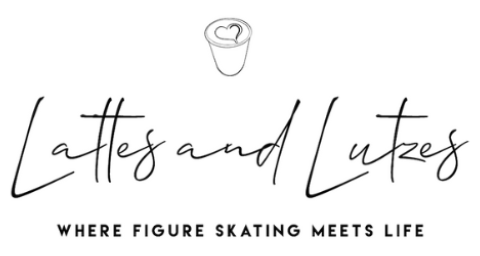
When you think of an announcer at a skating competition, what phrases automatically come to mind? For me, it’s always the dreaded: “Skaters, there’s one minute remaining in this warm-up.”
I found myself behind the mic for the first time when a local judge suggested me for the role and introduced me to the competition’s chief announcer. It was an unexpected opportunity — and I learned a lot.
But announcers do more than count down warm-ups. Announcers are responsible for introducing skaters before they perform, reading scores, announcing officials, and delivering general competition information. As the voice of the event, they need to work closely with referees and music coordinators, all while keeping the audience informed and the event flowing smoothly.
What Does an Announcer Do at a Figure Skating Competition?
At its core, the announcer’s job is to communicate essential information to skaters, coaches, officials, and the audience. We work as part of a team with the referee, music coordinator, and other officials to maintain professionalism and ensure everything runs like clockwork.
While the announcer is the voice you hear, a lot of preparation happens behind the scenes before the event even begins — especially by the chief announcer, who creates the competition scripts. This includes welcome remarks, reminders, queuing the national anthem, warm-up introductions, and even pre-written emergency announcements.
As an announcer, you also need to know:
-
- How many events are taking place on your rink
- The timing of ice re-surfacings
- Which officials are on the panel (and how to pronounce their names!)
- The number of competitors in each event
- Whether warm-ups are combined or separate
This prep helps you map out when things will be busy and when you might get a second to breathe, sip water, or stretch.
One fun fact I learned: most announcers bring their own microphone and equipment. Yes, seriously. You don’t just show up — you come prepared.
Big Competition or Small Competition — Which Is Harder?
What’s easier to announce: a big event with IJS judging or a smaller local competition using the 6.0 system? Excellent question — and honestly, I’m still undecided.
At one of my first events, I was asked to announce at a local event hosting everything from Junior/Senior to Excel, Aspire, and lower-level divisions. It was my first time seeing the Aspire events in action.
While I’m not a coach or judge, I thought Aspire offered a fantastic introduction to competition for newer skaters. That said, from an official’s standpoint, Aspire moves fast. Groups are capped at six skaters, meaning there are often multiple groups (Group A, B, C, etc.), and warm-ups are shortened to just 3 minutes. Compared to IJS judged events — where warm-ups last 6 minutes and the pace of things slow down due to longer programs and the need to video review technical elements — Aspire felt like the skating version of speed dating.
Luckily, the chief announcer was incredibly organized, showing me how she prepped event sheets to keep things flowing efficiently. With quick turnaround times, there’s no room for fumbling. She also said in her experience smaller events can be challenging as you are often wearing more than ‘one hat’ and the set ups are less that ideal. However, there are more eyes on larger competitions and more pressure to keep events with IJS judging on time.
What Makes Announcing Tricky?
One challenge at smaller events is that the competition panel (judges, referees, announcers) are often spread out across the rink. At this event, I couldn’t see the judges or referee at all! Instead, we communicated by radio, with a light system indicating when scores were finalized, and it was time to announce the next skater.
The most chaotic moments? Trying to:
-
- Announce up to 12 skaters for a warm-up
- Introduce the officials panel to the audience
- Run the backup timer
- Give the one-minute remaining warning
- Close the warm-up
— all in three minutes — before introducing the first skater to compete.
What I Loved the Most
One of the best parts of working with the chief announcer was seeing how much thought she put into every script. As a skating parent herself, she made sure those skating first or last got just a little extra warmth in their introduction, knowing how tough those skating slots can be.
She also encouraged me to keep smiling, even when things felt hectic. “A calm, friendly introduction makes the skaters feel more comfortable,” she said — and she was right. As a skater myself, I know that those little moments help settle nerves before stepping onto the ice.
Most Unexpected Moments?
-
- Last-minute skater withdrawals requiring real-time confirming competitor order with the referee
- Needing to ask a non-skater who accidentally wandered onto the ice mid-warm-up to leave the ice surface (!)
Final Thoughts
Overall, stepping into the announcer’s booth gave me a whole new appreciation for the people on “the other side of the boards.” Announcers may be behind the scenes, but their role shapes the experience for both skaters and spectators alike.
Next time you hear someone say “One minute remaining in this warm-up,” give a silent nod to the person behind the mic — they’re doing a lot more than you think.

Interesting…. Also a helpful overview in gaining perspective of ALL involved in the sport! As a competitor good to know info … we are all nervous in our desire to prepare and give our best efforts!